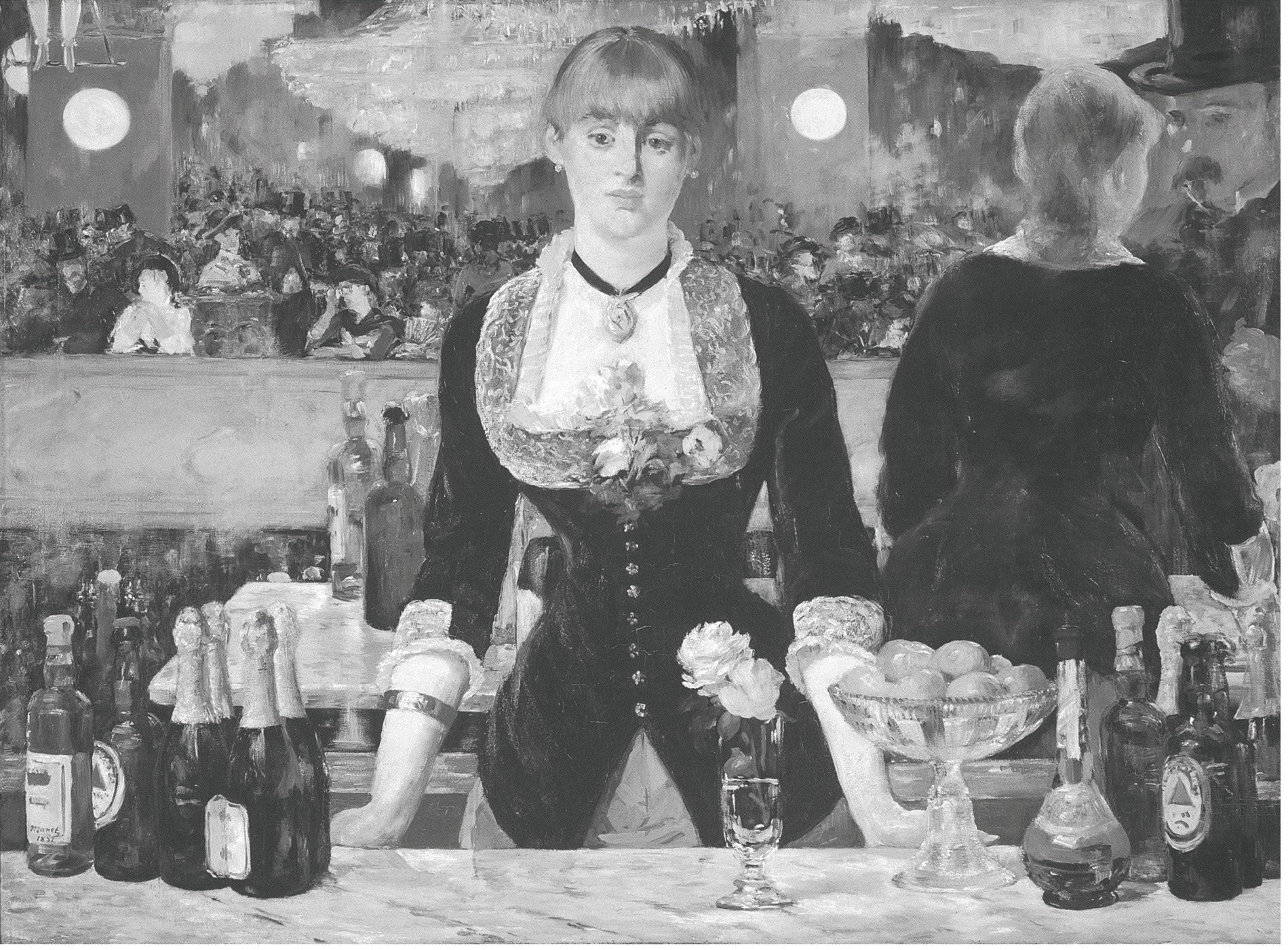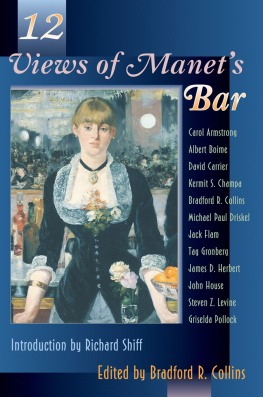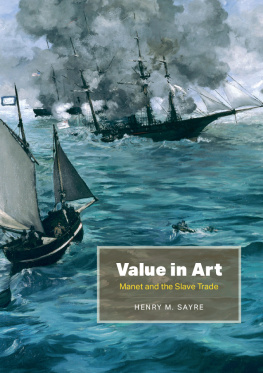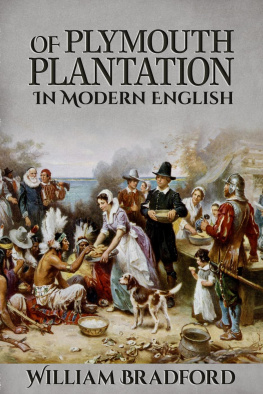Bradford Collins - Twelve Views of Manets Bar
Here you can read online Bradford Collins - Twelve Views of Manets Bar full text of the book (entire story) in english for free. Download pdf and epub, get meaning, cover and reviews about this ebook. year: 2020, publisher: Princeton University Press, genre: Art. Description of the work, (preface) as well as reviews are available. Best literature library LitArk.com created for fans of good reading and offers a wide selection of genres:
Romance novel
Science fiction
Adventure
Detective
Science
History
Home and family
Prose
Art
Politics
Computer
Non-fiction
Religion
Business
Children
Humor
Choose a favorite category and find really read worthwhile books. Enjoy immersion in the world of imagination, feel the emotions of the characters or learn something new for yourself, make an fascinating discovery.
- Book:Twelve Views of Manets Bar
- Author:
- Publisher:Princeton University Press
- Genre:
- Year:2020
- Rating:5 / 5
- Favourites:Add to favourites
- Your mark:
- 100
- 1
- 2
- 3
- 4
- 5
Twelve Views of Manets Bar: summary, description and annotation
We offer to read an annotation, description, summary or preface (depends on what the author of the book "Twelve Views of Manets Bar" wrote himself). If you haven't found the necessary information about the book — write in the comments, we will try to find it.
Twelve Views of Manets Bar — read online for free the complete book (whole text) full work
Below is the text of the book, divided by pages. System saving the place of the last page read, allows you to conveniently read the book "Twelve Views of Manets Bar" online for free, without having to search again every time where you left off. Put a bookmark, and you can go to the page where you finished reading at any time.
Font size:
Interval:
Bookmark:


Edouard Manet, A bar at the Folies Bergre, 188182. Courtauld Institute Galleries, London.
THE PRINCETON SERIES IN
NINETEENTH-CENTURY ART,
CULTURE, AND SOCIETY
12 Views of Manets Bar
12 Views
of Manets Bar
EDITED BY BRADFORD R. COLLINS
PRINCETON UNIVERSITY PRESS
Copyright 1996 by Princeton University Press
Published by Princeton University Press, 41 William Street,
Princeton, New Jersey 08540
In the United Kingdom: Princeton University Press,
Chichester, West Sussex
All Rights Reserved
Copyright 1996 for Looking into the Abyss:
The Poetics of Manets A Bar at the Folies-Bergre by Jack Flam
Library of Congress Cataloging-in-Publication Data
12 Views of Manets Bar / edited by Bradford R. Collins.
p. cm. (The Princeton series in nineteenth-century art,
culture, and society)
Includes bibliographical references.
ISBN 0-691-03690-X (cl : alk. paper). ISBN 0-691-03691-8 (pb : alk. paper)
1. Manet, Edouard, 1832-1883. Bar at the Folies-Bergre.
2. Manet, Edouard, 1832-1883Criticism and interpretation.
3. PaintingHistoriography. I. Collins, Bradford R., 1942
II. Series.
ND553.M3A63 1996
759.4dc20 95-38924
http://pup.princeton.edu
ISBN 13: 978-0-691-03691-5
eISBN 978-0-691-22396-4
THIS BOOK IS DEDICATED
TO MY MENTOR AT
WASHINGTON UNIVERSITY,
NORRIS KELLY SMITH,
TO MY LOVELY DAUGHTERS
(MAIDA, ALI AND ZOLA),
AND, MOST IMPORTANTLY, TO
STACEY
(FOR SO MANY REASONS).
List of Illustrations
The medium is oil on canvas, unless otherwise stated. All dimensions are in centimeters.
Frontispiece
Figures
Notes on Contributors
Richard Shiff is Effie Marie Cains Regents Chair in Art at the University of Texas at Austin. He is author of Czanne and the End of Impressionism (1984), as well as essays on modernist art and on issues of history and theory.
Carol Armstrong teaches at the Graduate Center of the City of New York. Her publications include Odd Man Out: Readings of the Work and Reputation of Edgar Degas (1991) and articles on Degas, Manet, and 20th-century photography. She is currently working on two books: one on photographic illustration in 19th-century England and one on Manet.
Albert Boime, Professor of Art History at the University of California, Los Angeles, is currently completing volume three of his Social History of Modern Art, Art in an Age of Counter-Reformation. His most recent book is Art and the French Commune (The Princeton Series in Nineteenth-Century Art, Culture, and Society).
David Carrier, Professor of Philosophy at Carnegie Mellon University, writes art criticism. His books include: Artwriting (1987), Principles of Art History Writing (1991), Poussins Paintings (1993), and The Aesthete in the City: The Philosophy and Practice of American Abstract Painting in the 1980s (1994). He is at work on a study of Baudelaires art criticism.
Kermit S. Champa has been a professor of the history of art at Brown University since 1969. His most important books and exhibition catalogues include: German Painting of the Nineteenth Century (1970), Studies in Early Impressionism (1972), Mondrian Studies (1985), The Rise of Landscape Painting in France (1990), and Masterpiece Studies (1994).
Bradford R. Collins teaches contemporary art history and theory at the University of South Carolina. He has written articles on Manet, Greenberg, Motherwell, Warhol, and the Abstract Expressionists. Recently, he edited an Art Journal issue dedicated to rethinking the introductory survey (fall 1995) and authored three chapters of Art History (Harry N. Abrams, 1995).
Michael Paul Driskel, author of Representing Belief: Religion, Art, and Society in Nineteenth-Century France (1992) and As Befits a Legend: Building a Tomb for Napoleon, 1840-1861 (1993), has published numerous articles on French art and culture in the nineteenth century. He lives in Washington, D.C.
Jack Flam is Distinguished Professor of Art History at Brooklyn College and at the Graduate Center of the City University of New York. He is author of numerous articles, exhibition catalogues, and books on modern art, including Matisse: the Man and his Art, 1869-1918 (1986), which won the College Art Associations Charles Rufus Morey Award.
Tag Gronberg, a member of The Oxford Art Journal Editorial Board, teaches the history of art and design at Birbeck College, University of London. She is author of Femmes de Brasserie (Art History, 1984) and Manet: A Retrospective (1988). She recently completed a study of the 1925 Paris Exhibition.
James D. Herbert is Associate Professor of Art History at the University of California, Irvine. His Fauve Painting: The Making of Cultural Politics (1992) received the 1993 Hans Rosenhaupt Memorial Book Award, granted by the Woodrow Wilson National Fellowship Foundation. He is currently examining such French cultural practices as Surrealist art, the Muse de LHomme, and the Exposition Internationale of 1937 in a manuscript entitled Global Speculations: Exhibitions of Commerce, Ethnography, and Art in Paris, 1937-38.
John House is professor in the history of art at the Courtauld Institute of Art, University of London. He was co-organizer of the Post-Impressionism exhibition at the Royal Academy of Arts, 1979-80, and of the Renoir exhibition, Hayward Gallery, London, 1985. He is author of Monet: Nature into Art (1986) and of many articles on French 19th-century painting.
Steven Z. Levine is chair of the history of art department and Leslie Clark Professor in the Humanities at Bryn Mawr College. He is author of Monet and His Critics (1976), Claude Monet (1994), and Monet, Narcissus, and Self-Reflection: The Modernist Myth of the Self (1994). His next book is on self-portraiture.
Griselda Pollock is Director of the Center for Cultural Studies at the University of Leeds. She is co-author, or author, of numerous books, including Old Mistresses: Women, Art and Ideology (1981), Framing Feminism (1987), and Vision and Difference (1988). Her Sexuality and Surveillance and Differencing the Canon: Feminist Desire and the Writing of Arts Histories are forthcoming.
Preface
T HIS ANTHOLOGY grew out of a discussion with a colleague about the methodological approaches now loosely grouped under the label of the New Art History. My colleaguetrained in the period before 1970 in methods of research and analysis that he and his mentors trusted essentially without questionwas both distressed by the vehemence of recent attacks on so-called standard art history and puzzled by them. He wanted to know of a book or article he might consult that would provide him with some handle, at least, on the various approaches constantly referred to in contemporary art historical discourse: Marxist, psychoanalytic, structuralist, post-structuralist, and feminist, most notably. In short, he was curious to know how the methodologies coming to the discipline from fields such as anthropology, philosophy, and literary studies compared with the iconographical, stylistic, and contextual methods of analysis he had always found quite adequate. I told him that I could recommend articles that discussed the theoretical bases of the New Art History and books by the better-known practitioners associated with them (see but that the kind of document he sought was simply not available. We agreed that perhaps the profession needed a book that would provide both more conventional historians, such as himself, and our students, graduate and undergraduate, with a good, solid introduction to the new methodologies.
Font size:
Interval:
Bookmark:
Similar books «Twelve Views of Manets Bar»
Look at similar books to Twelve Views of Manets Bar. We have selected literature similar in name and meaning in the hope of providing readers with more options to find new, interesting, not yet read works.
Discussion, reviews of the book Twelve Views of Manets Bar and just readers' own opinions. Leave your comments, write what you think about the work, its meaning or the main characters. Specify what exactly you liked and what you didn't like, and why you think so.













